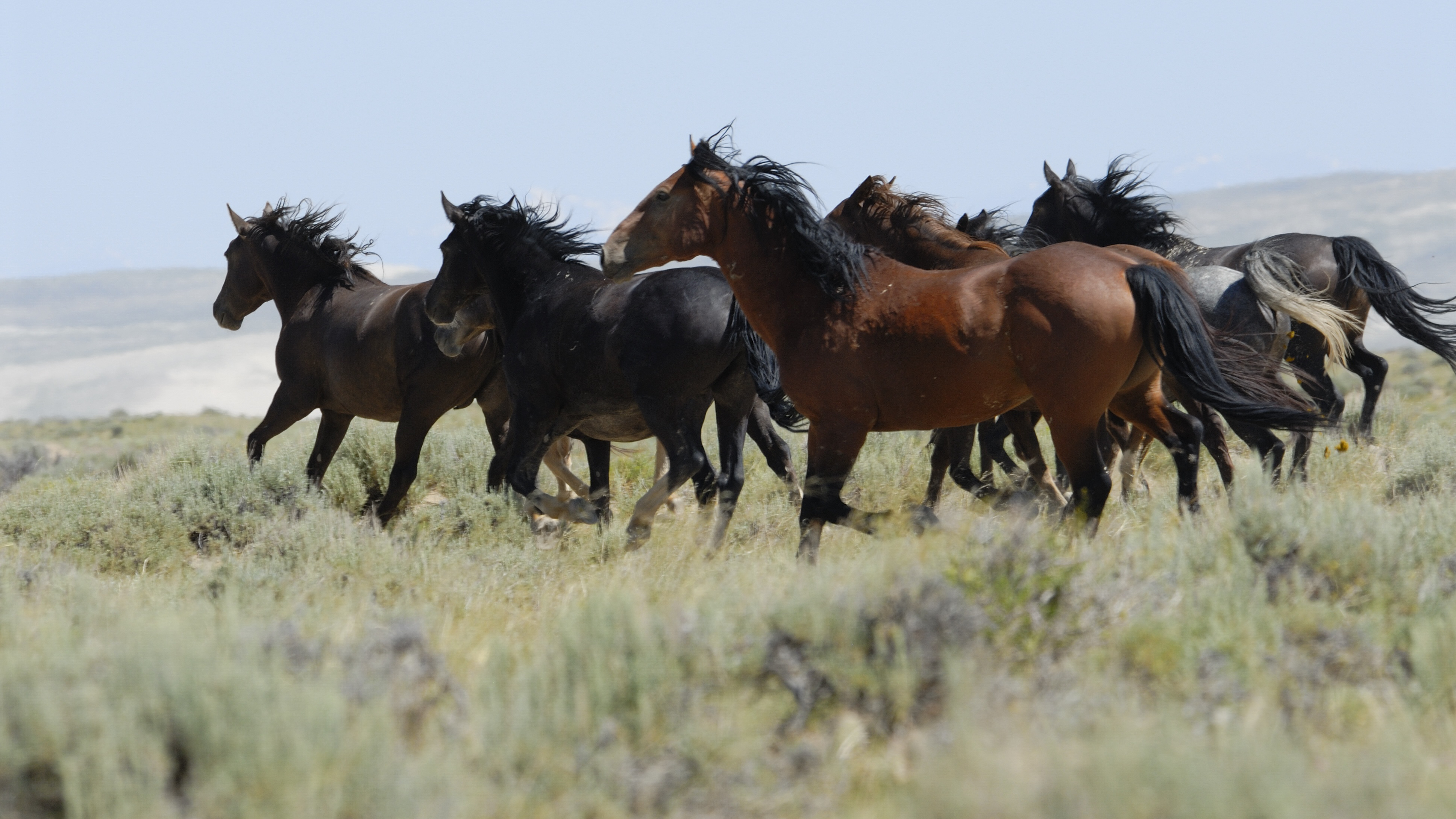
Wild Horse and Burro Management

Issue Overview
Wild horses and burros are to be managed according to the Wild and Free-Roaming Horse & Burro Act of 1971, which not only specifies where wild horses and burros can occupy public lands but that they shall be managed in a manner that produces a thriving natural ecological balance. In addition, the Bureau of Land Management (BLM) and U.S. Forest Service (USFS) are required by law to manage and balance multiple uses of public lands, including wildlife, horses and cattle grazing.
In 2017, the BLM estimated their lands contain over 72,000 horses and burros. Their populations are likely to raise climb to over 80,000 individuals due to a high annual growth rate and limited management options. USFS provides a rough estimate of approximately 10,000 horses and burros on their lands. In addition to rangeland herds, the BLM maintains more than 46,000 horses/burros in long term holding facilities. Managing wild horse and burro populations has become a financial burden on the BLM and the taxpayer requiring $81.5 million in FY 2017 for holding facility management, roundups and range management. Off range holding costs consume nearly 60% of the entire program budget.
Wild horse and burro populations have a demonstrated ability to grow at 18-20 percent per year. Widespread and overabundant feral horses and burros wreak havoc on the rangeland ecosystem by overgrazing native plants, exacerbating invasive establishment and out-competing other ungulates. As a result, water resources are impacted and important and iconic wildlife species are threatened. Overabundant free-roaming horse and burro populations have large and growing economic and ecological costs for the American public. Without effective management actions, horse and burro populations will double within the next 4-5 years, causing the rangeland ecosystem to further degrade.
Background
Horses and burros currently roaming the Western landscape are not native to North America. These animals are descended from domesticated breeds brought to North America from Europe. In 1971, Congress passed the Wild Free-Roaming Horses and Burros Act. The Act seeks to preserve wild horses and burros on federal lands as “living symbols of the historic and pioneer spirit of the West.” It imposes criminal penalties for removing, converting to private use, killing, harassing, selling or processing into commercial products the remains of wild horses and burros (with exceptions) under federal jurisdiction without federal authority. Management responsibility is assigned to the Bureau of Land Management in the Department of the Interior and the Forest Service in the Department of Agriculture.
The Act authorizes federal agencies to remove animals exceeding the range’s carrying capacity to restore a natural ecological balance and protect the range from deterioration associated with an overpopulation of wild horses and burros. The Appropriate Management Level (AML) as defined by the government is 26,715. The Act directs the agencies to destroy old, sick or lame animals by the most humane means available, remove healthy animals for private adoption and lastly, if adoption demand is insufficient, the remaining healthy animals are to be destroyed. However, the BLM is currently prohibited from using this authority due to language included in the Interior Appropriations acts.
Our Policy
Affected states should take necessary action to require the Bureau of Land Management to comply with the provisions of the Wild Free Roaming Horses and Burros Act.
The federal government must support:
- Acknowledging that wild horses and burros are feral animals;
- Managing horse and burro populations in compliance with agency resource management plans;
- State responsibility and action in accordance with the respective state’s abandoned livestock laws or statutes;
- Maintaining a thriving natural ecological balance on the range for all multiple uses;
- Effective and efficient fertility control including sterilizations to minimize population growth and reduce the cost of gathers;
- Utilizing any humane method of removing excess wild horses and burros from the range including, but not limited to, the use of helicopters, bait and traps and lethal control;
- Transferring title of wild horses immediately upon adoption;
- Horses and burros that have been held in government captivity for more than six months and are deemed unsuitable for adoption being sold without limitation to the highest bidder or being euthanized;
- The testing for diseases;
- Proportional reduction in wild horse and burro numbers in the event livestock numbers have to be reduced for any reason;
- Amending the Act to allow states and tribes the option to manage horses and burros within their respective boundaries; and
- The development of a program to systematically transfer unadoptable mustangs and burros to thirdworld countries as humanitarian effort for the use as small-scale draft animals, transportation and other domestic uses.
We oppose:
- Reduction or elimination of livestock grazing rights due to misuse of federal lands by wild horses or burros;
- Any new or expanded wild horse and burro territories being established on public land or imposed on private land;
- Using taxpayer funds for marketing campaigns;
- Designating horse or burro herds as treasured or other special classifications; and
- Any federal agency providing protection of abandoned or stray horses.
Action
AFBF urges Congress to provide and require federal agencies to utilize management tools including roundups, long term and permanent fertility control, adoption and sale without limitations.
Top Issues
VIEW ALL